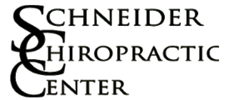
Neurofeedback is intended for people with neurological and nervous system conditions. Here is a list of symptoms that are often shown in research studies to be clinically responsive to neurofeedback:
- ADD / ADHD
- Addiction
- Anxiety
- Autism
- Bipolar Disorder
- Depression
- Chronic Fatigue
- Chronic Pain
- Epilepsy
- Fibromyalgia
- Head Injuries
- Insomnia
- Memory Loss
- Migraines
- Obsessive compulsive (OCD)
- Post-Traumatic Stress Disorder
- Sleep Disorders
- And More!
It’s important to note that Neurofeedback does not specifically target any disorder. Instead, Neurofeedback changes timing and activation patterns in the brain. The goal is to slowly guide your brain back into normal, healthy ranges and reconnect neural pathways that have been disconnected. The result is an improvement in brain regulation, which in turn impacts a variety of symptoms. Listed below is additional information for specific conditions. This information was gathered from aboutneurofeedback.com. Additional research and comprehensive studies can be found at the International Society for Neurofeedback and Research website.
ADD/ADHD
More kids and adults with ADD/ADHD are using neurofeedback than any other problem. Experienced clinicians estimate that, at a minimum, they have a significant impact on 80-85% of these patients who complete 30-40 training sessions. Is it the most commonly treated because it’s the easiest problem to deal with? Not really. ADD/ADHD is often many different symptoms rolled into one diagnosis. These must be sorted out as part of doing neurofeedback. There are some practical reasons that ADD/ADHD is the most common use of neurofeedback:
- Parents are far more motivated to help their children succeed than to help themselves.
- Increasing concerns that putting a child on medications for years is not a good thing. Parents want an alternative that works.
- For many kids, medications don’t work very well. They have side effects, make the kid feel less normal, or create more problems.
- There are thousands of neurofeedback success stories around the country. More clinicians are adding neurofeedback because patients are asking for it or talking about it.
- There is solid, published research on ADD/ADHD and neurofeedback.
- There is increased awareness of the role of the brain in ADHD (as well as other disorders). In the last 5 years, every magazine seems to have had a brain imaging picture on its cover. As a result, neurofeedback as a brain-based intervention doesn’t seem so foreign, and there is much more openness towards the concept.
Anxiety
Many clinicians say generalized anxiety is one of the first symptoms to start responding to training. Significant improvements are typically estimated at 80-90% of people being trained. However, results also depend very much on what other disorders may exist. More complex cases that have multiple other problems may take more expertise and time to respond. We still expect that these more complex cases will respond to neurofeedback. However, they take more time, expertise, and clinical skills. That means not every clinician will achieve good results in these cases.
Autism
Autism, PDD, and RAD are the fastest growing areas of neurofeedback. The calming effects of neurofeedback produce noticeable results quickly in these severely affected populations. Due to the extreme nature of Autism, significantly more time may be needed to see results.
Bipolar Disorder
Clinical reports from psychiatrists and psychologists indicate that neurofeedback helps patients with Bipolar Disorder become more stable and better able to reduce medications.
Chronic Pain/Fatigue
For chronic pain, neurofeedback helps reduce pain or perhaps how the brain manages pain, even in severe cases.
Depression
Even for long-term, non-responsive depression cases, neurofeedback typically helps alleviate symptoms. It can also help reduce multiple medications, which is not uncommon. Depression and dysthymia are among the more common conditions neurofeedback helps. This is not to say it’s easy. Clinical skills are important. There is a variety of protocol options, depending on the comorbidities associated with the client.
Epilepsy/Seizures
Multiple peer-reviewed studies show a reduction in seizures that are non-responsive to medications and that the training effect holds. This literature is compelling in respected journals, and the clinical reports consistently reflect improvement. But for several reasons, including a lack of funding to educate physicians, the research is not well known.
Learning Disabilities
Over the last few years, two professionals, in particular, have published data about new brain training techniques they are using to target learning disabilities with qEEG. This was huge news for the field of neurofeedback. It’s common for reading, math, and other problems to improve with neurofeedback, and that is significantly helpful, but some clients could still have deficits after neurofeedback training. By adding this new technique of coherence training, a fairly sophisticated component of training, several highly reputed professionals are reporting more consistent improvements in dyslexia, reading and math deficits, and visual and auditory processing problems.
Migraines
Therapists and doctors report that the frequency and intensity of migraines are often reduced and sometimes eliminated.
Insomnia/Sleep Disorders
The first changes clients typically observe after receiving neurofeedback relate to sleep. This includes improvement in insomnia, bruxism, poor sleep quality, difficulty walking, frequent waking, and nightmares.
Substance Abuse
In one published study, neurofeedback was compared with a successful 12-step program for crack, cocaine, methamphetamine, and heroin users. Sustained abstinence was significantly greater (2 times or greater) with the group that received neurofeedback training. Previously published studies show similar results for alcoholics. Substance abuse is an obvious form of poor self-regulation and self-medication.
Traumatic Brain Injury
Neuropsychologists have reported that improvement with TBI often occurs even many years after the injury and that neural plasticity still exists. Emotional and behavioral improvements are significant for this group.
